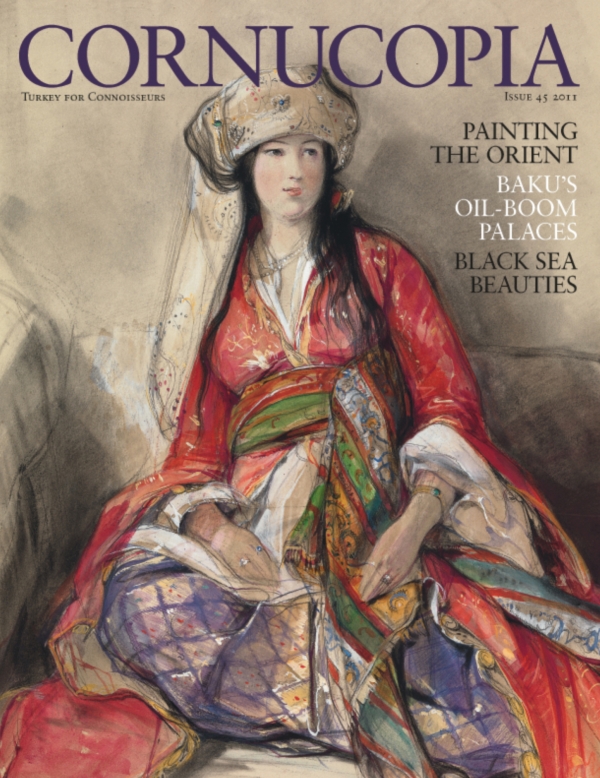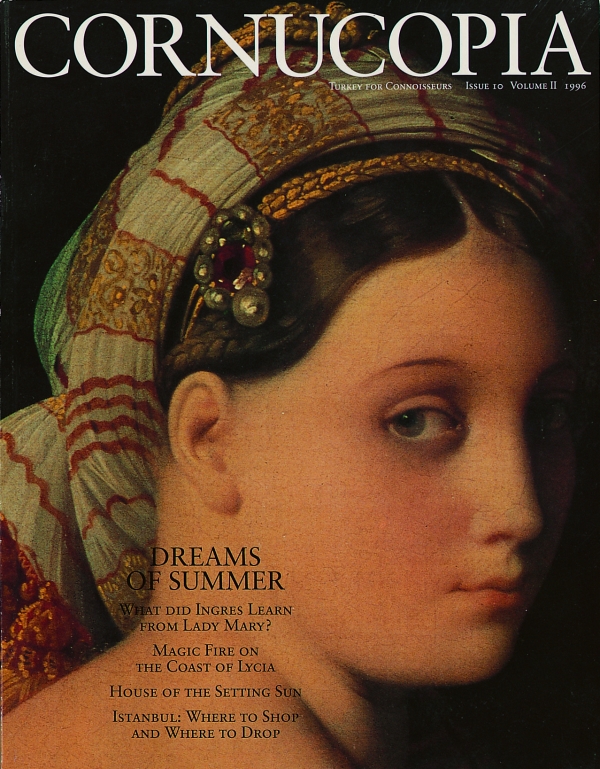Buy or gift a stand-alone digital subscription and get unlimited access to dozens of back issues for just £18.99 / $18.99 a year.
Please register at www.exacteditions.com/digital/cornucopia with your subscriber account number or contact subscriptions@cornucopia.net
Buy a digital subscription Go to the Digital EditionA storm one cold winter’s day in Rome brought Jean-Etienne Liotard to Istanbul. In a café where he took refuge from the rain, he met an Englishman, William Ponsonby, the future Earl of Bessborough, who invited the painter to join his party on a tour of the East. Liotard accepted, and they set sail from Naples on April 3, 1738.
The Louvre, together with the Museum of Art and History in Geneva, has staged the first comprehensive exhibition of the work of this Swiss-born painter. It covers the full range of Liotards oeuvre, from his early work as a miniaturist in Paris to his wonderful pastels. Among them are some thirty penetrating self-portraits, and a group of sixty sketches made during his four-year stay in istanbul. When Ponsonby and his party moved on to Egypt, Liotard decided to stay.
Liotard was fascinated by all he saw during his eastern journeys, and his work, beautifully observed, was to supply many of the rococco artists of his day, including Van Loo, Fragonard and Boucher, with details of an Orient they never visited. But it was Istanbul that inspired him the most. After the painting Dame de Constantinople was exhibited at the show La Turquerie au XVIIIe siecle in 1911, the critic Léandre Vaillat wrote that Liotard was amused by :les petites Chypriotes, les femmes de Chio”, adding, however, that “celles de Constantinople l’ont viviblement séduit.”
On his return to the West, Liotard spent time in Vienna, where he continued to wear Turkish costume and a long silvery Moldavian beard.
As a portraitist he worked in Vienna, London and Amsterdam, where he married at the age of fifty-eight; he settled finally in Geneva with his five children.
His portraits, described by Horace Walpole as “too like to please”, influenced several of his English contemporaries. Liotard was an obsessive realist. In 1781 he wrote: “It is in drawing frequently and faithfully from nature that one can bring a picture to its highest degree of perfection.”
The exhibition is curated by Anne de Herdt, keeper of the department of drawings at the Museum of Art and History in Geneva. For the first time it brings together some 150 works from public collections in Geneva, Vienna, London and Amsterdam, as well as many from private collections.
An exhibition of one of the finest pastelists of the eighteenth century is all the more remarkable today given the difficulties of safely displaying and transporting pastels, in which the colour is fine dust that barely binds to the paper.
A beautifully produced catalogue was published for the exhibition (1992) by the Louvre and the Museum of Art and History in Geneva.
Exquisite bulbs, once uprooted in their millions, may be saved by a scheme to satisfy both gardeners and conservationists. Botanist Andrew Byfield reports
He was the most prolific architect of all time and his legacy endures in the great mosques created for Süleyman the Magnificent. Yet, as Brian Sewell discovers, this contemporary of Michelangelo is barely known to the West. Brian Sewell admires his legacy. Photographs by Ara Güler.
The Mocan Yalı, in the pretty village of Kuzguncuk, half a mile upstream from Üsküdar, is relatively old, decidedly large and incontrovertibly pink. Sultans stayed in it, and Liszt played in it. The yalı was purchased by the Toprak family shortly after this article was published. The interior of the house was gutted and only the facade remains. The images published in this article are a unique historical record of a centuries-old house and were taken by David George for Cornucopia in 1992
The Golden Fleece, Trebizond, Sumela… Jeremy Jame’s itinerary in Turkey’s dramatic Black Sea Mountains promised a string of ancient wonders
From chestnuts to walnuts, from pistachios to pine kernels, they are a mainstay of Turkey’s celebrated cuisine. Berrin Torolsan unearths some splendid traditional nut recipes.
More cookery features
The French novelist Pierre Loti caused a stir in the 1900s when he championed the cause of Turkish women. But just who were the three veiled women who gave him his information? Ömer Koç reports on an infamous literary deception
Unlike the much older Venice Biennale, at the Istanbul Biennial there was a feeling of youthful experimentation.
The relentless bombing of Mostar (1992) is destroying the fruits of five centuries of peaceful coexistance in Bosnia. Marian Wenzel recalls how the old Ottoman city looked when she lived there in the Sixties



Cornucopia works in partnership with the digital publishing platform Exact Editions to offer individual and institutional subscribers unlimited access to a searchable archive of fascinating back issues and every newly published issue. The digital edition of Cornucopia is available cross-platform on web, iOS and Android and offers a comprehensive search function, allowing the title’s cultural content to be delved into at the touch of a button.
Digital Subscription: £18.99 / $18.99 (1 year)
Subscribe now